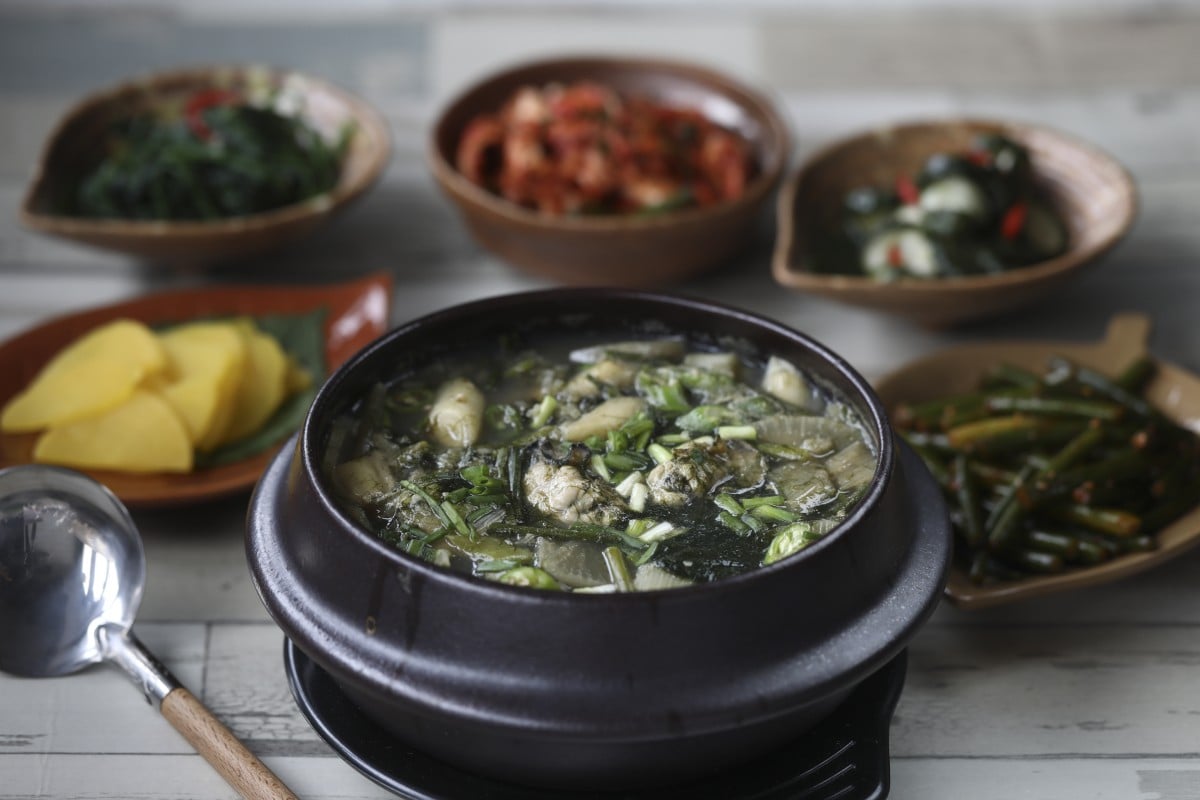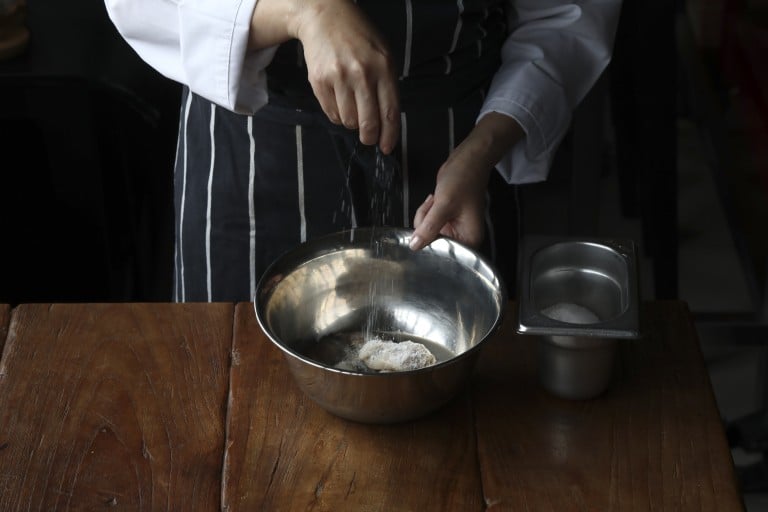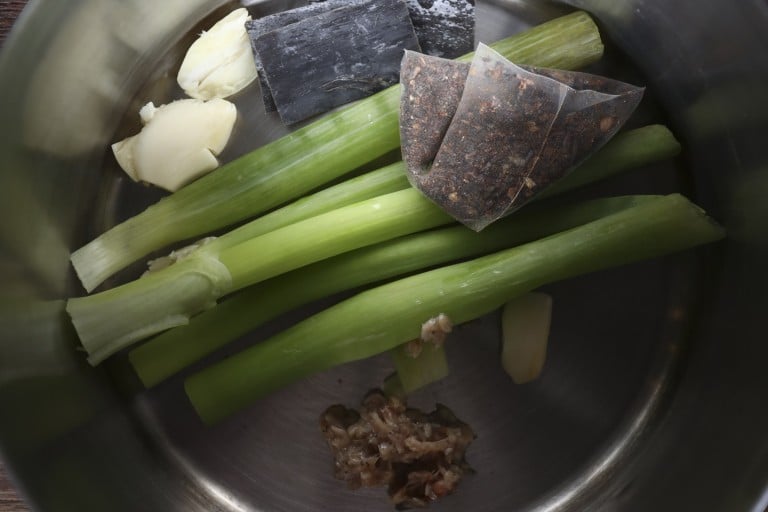
This Korean dish of oyster, seaweed and rice soup is something I make when I’m dining alone, because I’m the only one in my household that likes oysters. It’s delicious, and takes only about 20 minutes to prepare, including thawing the oysters (I use frozen ones). It’s easy enough to increase the quantities to feed more; the cooking time is the same and you’ll just need a larger pot.
If you have a good source of fresh oysters, preferably small ones such as Kumamoto oysters, then by all means use them, but the soup will be expensive. I use frozen oysters, which are far more economical and convenient because you can keep them on hand; look for ones that are about 3cm (1¼ in). Look for them in shops that sell frozen seafood, dumplings and fish and seafood balls. Shucked oysters packaged in plastic tubs and stored in the refrigerated sections of supermarkets can also work, although they tend to be quite large so you’ll need fewer of them.
For many of the soup ingredients, you’ll need to visit a Korean grocery shop or order online. The only ingredient that might be hard to find, even at a Korean shop, is fulvescens seaweed – a very fine, hair-like variety that is sold frozen or dried (frozen is better). If you can’t find it, substitute thin shreds of kelp or a handful of shredded, unseasoned nori seaweed (it’s not the same thing, though).
Korean soup stock bags contain ingredients such as dried anchovy and kelp. Unlike Japanese dashi bags, the ingredients in Korean soup bags tend to be whole, rather than powdered, and need to be simmered for longer. If you substitute a dashi bag, add it with the kelp and remove it at the same time.
Korean brined shrimp (saeujeot) are tiny and come in jars. Soup soy sauce is pale in colour and is saltier and has more umami than regular soy sauce. If you can’t find saeujeot or soup soy sauce, substitute Korean anchovy sauce or Thai or Vietnamese fish sauce, adding it to taste.
If you don’t want rice, just leave it out – this version of the soup is called gul guk.

If using frozen oysters, put them in a bowl, add tepid water and leave for about five minutes, or until the oysters are thawed. Pour off as much water as possible, then sprinkle one teaspoon of salt over the oysters. Mix gently – the oysters will become slimy. Add some water to the bowl, stir gently, then pour off the water. Repeat the salting and rinsing process once, then drain off as much water as possible. If using fresh oysters, shuck them then rinse them briefly before draining.
Put the fulvescens seaweed in a bowl, add water to cover and leave until thawed. Pour off the water, sprinkle one teaspoon of salt over the seaweed and mix gently, then rinse with fresh water before draining in a small sieve.
Thoroughly rinse the leek and trim off and discard the root end. Trim off the dark green part of the leek and cut it into pieces about 5cm (2 in) long. Slice the white and pale green part of the leek on the diagonal into pieces about 1cm (⅜ in) long and set aside.

Halve the garlic clove and thinly slice it. Slice the radish into pieces about 5mm (¼ in) thick. Cut the chives into 2.5cm (1 in) lengths. Thinly slice the chilli on the diagonal and mince the spring onions.
Pour 550ml (2¼ cups) of water into a stove-to-table earthenware pot that holds about 1.2 litres (4¾ cups).

Put the leek tops, garlic, radish and stock bag into the pot and bring to a boil over a high flame. Lower the heat and cook the ingredients on a low simmer for about five minutes.
Add the pieces of dried kelp and simmer for one minute. Use chopsticks to remove the leek pieces, soup bag and kelp.
Stir the saeujeot and the white and pale green parts of the leek into the simmering liquid and cook for about a minute.

Add the oysters, fulvescens seaweed and flat chives and stir well. Taste for seasonings and add some soup soy sauce, if necessary.
Simmer the ingredients for about three minutes, then stir in the rice and cook for two more minutes.
Scatter the banana chilli and spring onion on top, then serve immediately, with kimchi or banchan.